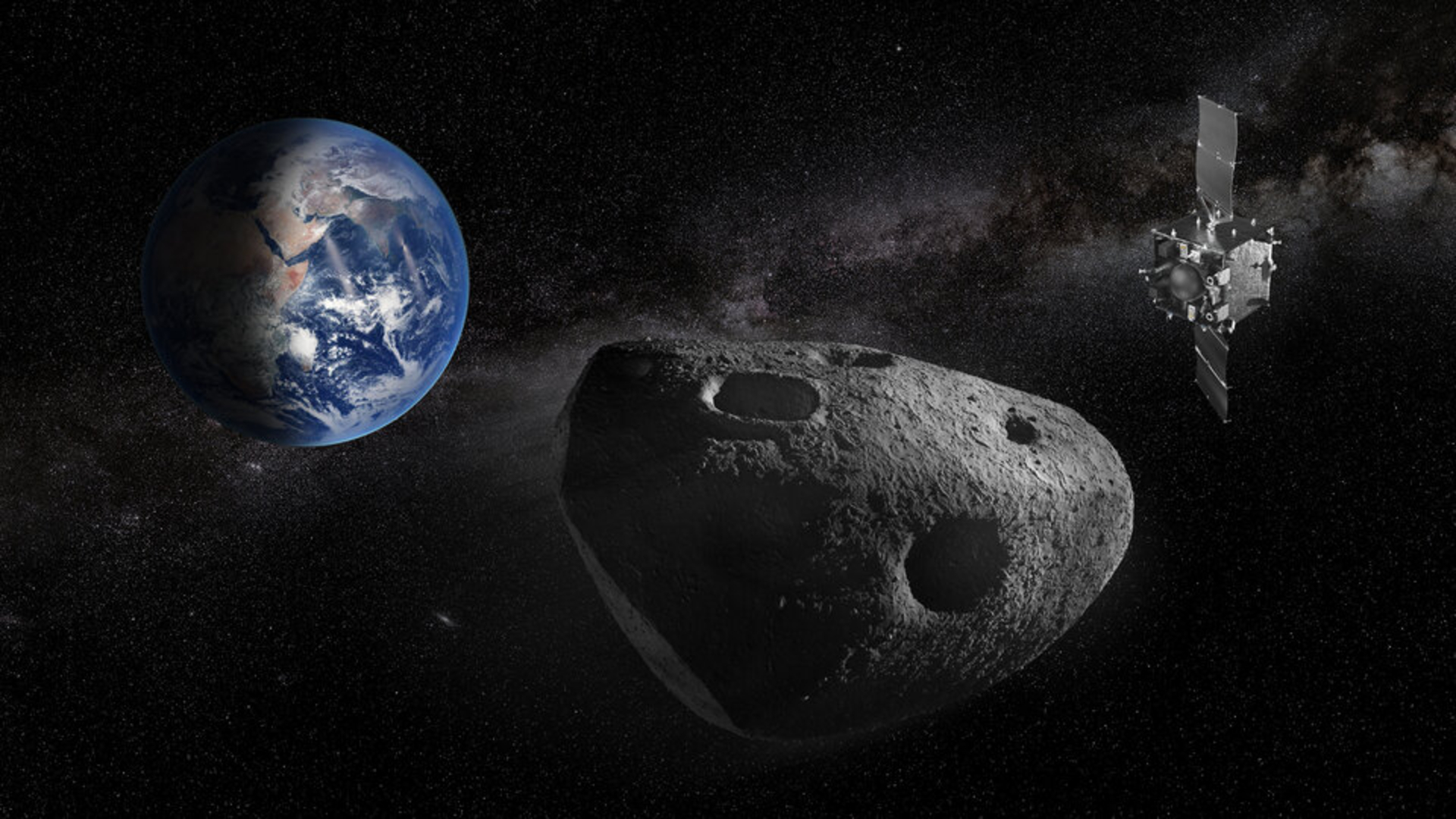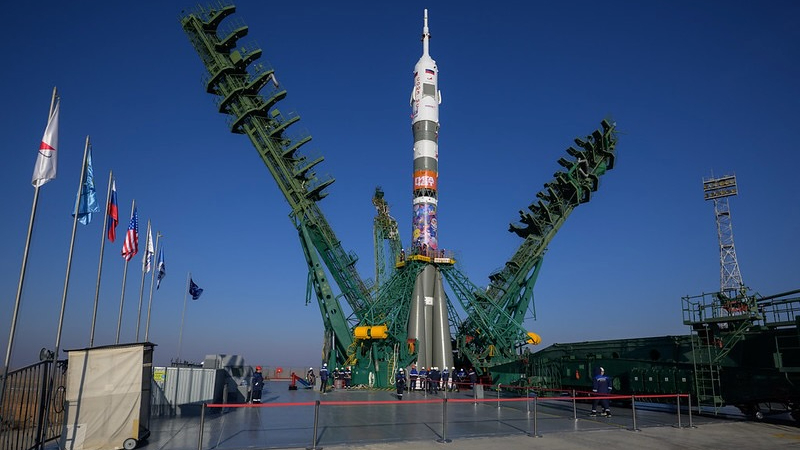How do asteroids spin in space? The answer could help us prevent a catastrophic Earth impact
"With these probability maps, we can push asteroids away while preventing them from returning on an impact trajectory, protecting the Earth in the long run."

When it comes to saving Earth from a potential doomsday rock, knowing where to hit it and how it spins could make all the difference. Two new studies presented last month at the Europlanet Science Congress in Helsinki may have just given scientists both answers.
In one study, researchers led by Wen-Han Zhou of the University of Tokyo used data from the European Space Agency's now-retired Gaia mission to study how an asteroid's spin depends on how often it's been hit by other space rocks. In another study, a team led by Rahil Makadia of the University of Illinois at Urbana-Champaign developed a method for identifying the safest regions on an asteroid to strike with a deflection mission, without accidentally steering it back toward Earth.
Together, the findings offer a new way to understand the structure and behavior of these ancient bodies — knowledge that could prove critical to deflecting a dangerous asteroid if it were ever on a collision course with our planet.
"By leveraging Gaia's unique dataset, advanced modelling and AI tools, we've revealed the hidden physics shaping asteroid rotation, and opened a new window into the interiors of these ancient worlds," Zhou said in a statement.
How asteroids get their spin
In recent decades, astronomers have been puzzled by why some asteroids rotate like spinning tops while others tumble through space in chaotic, unpredictable ways. Zhou's team set out to solve that mystery using Gaia's vast archive of asteroid light patterns and new computer models.
Their analysis showed that an asteroid's spin pattern boils down to a cosmic "tug of war" between two forces: collisions that knock them into unstable motion and internal friction that gradually smooths their rotation.
"When these two effects balance, they create a natural dividing line in the asteroid population," Zhou said in the statement.
Breaking space news, the latest updates on rocket launches, skywatching events and more!
Machine learning revealed this "dividing line" in Gaia's data as a clear gap between fast-spinning asteroids and slow, tumbling ones. Slower rotators, the researchers found, are more easily jolted into a wobble by impacts, while faster ones resist those disturbances, according to the statement.
Sunlight also plays a subtle but important role, the study reports. As an asteroid's surface heats up during the day and cools at night, it emits tiny bursts of radiation that act like microscopic thrusts. For smoothly spinning asteroids, those pushes line up in the same direction and gradually change their spin rate. But for tumblers, the pushes more or less cancel each other out, trapping them in their slow, chaotic motion.
The results also indicate that many asteroids aren't solid chunks of rock, but loose clusters of rock and dust held together weakly by gravity, known to astronomers as "rubble piles." That distinction matters for planetary defense, scientists say, because a fragile, porous asteroid would react to a spacecraft's impact very differently than a dense, solid one.
As more sky surveys come online, scientists will be able to apply this method to much larger samples, Zhou said in the statement. With upcoming observatories such as the Vera C. Rubin Observatory's Legacy Survey of Space and Time, "we'll be able to apply this method to millions more asteroids, refining our understanding of their evolution and make-up."
Finding the safe spots to strike
If knowing how an asteroid spins is the first step, the next is figuring out where to hit it.
Makadia's team investigated what happens when a spacecraft slams into an asteroid, and found that not all impact sites are created equal. Striking the wrong spot could send an asteroid drifting into what scientists call a gravitational keyhole — a tiny region of space where a planet's gravity could subtly bend the asteroid's orbit and make it swing back toward Earth on a future pass decades or centuries later.
"Even if we intentionally push an asteroid away from Earth with a space mission, we must make sure it doesn't drift into one of these keyholes afterwards," Makadia said in a different statement. "Otherwise, we'd be facing the same impact threat again down the line."
To avoid such a cosmic boomerang effect, Makadia's team created probability maps of asteroid surfaces that could guide mission planners. Using lessons from NASA's DART mission, which slammed into the asteroid Dimorphos in September 2022, and realistic spacecraft trajectories, they simulated hundreds of millions of kinetic-impact missions, each varying slightly in speed, angle and timing.
For each simulation, they calculated how an asteroid's motion would change, and whether it might drift into one of these gravitational keyholes. Repeating this process for a range of impact points and rotation angles allowed them to pinpoint the safest and most effective strike zones, according to the second statement.
"With these probability maps, we can push asteroids away while preventing them from returning on an impact trajectory, protecting the Earth in the long run," said Makadia.
To test their model, the researchers applied it to the near-Earth asteroid Bennu, one of the best-studied near-Earth objects thanks to NASA's OSIRIS-REx mission, which precisely mapped its surface, studied its orbit and brought a sample of the space rock home to Earth.
Earlier models had shown that Bennu's path included several potential gravitational keyholes that could, in theory, redirect it toward Earth sometime in the 22nd century. But data from OSIRIS-REx dramatically reduced those uncertainties, ruling out many potential keyholes and future impact scenarios.
Using that precise orbital data, Makadia's team simulated spacecraft impacts under a variety of conditions and projected Bennu's potential keyhole encounters, creating detailed impact-probability maps.
These maps show which areas on an asteroid would make the safest targets, and which regions could increase the long-term risk of a future encounter, the study notes. The optimal strike zones, marked as bright crosshairs in the model, show where a spacecraft could nudge an asteroid's orbit away from Earth without triggering a dangerous return later on.
According to the study, this kind of analysis could help design safer deflection missions even using only ground-based observations, when time doesn't allow for a dedicated rendezvous spacecraft.
"Fortunately, this entire analysis, at least at a preliminary level, is possible using ground-based observations alone, although a rendezvous mission is preferred," Makadia said in the statement.
As next-generation telescopes and missions uncover millions more asteroids, studies like these are helping scientists write a planetary defense blueprint to safeguard Earth.

Sharmila Kuthunur is an independent space journalist based in Bengaluru, India. Her work has also appeared in Scientific American, Science, Astronomy and Live Science, among other publications. She holds a master's degree in journalism from Northeastern University in Boston.
You must confirm your public display name before commenting
Please logout and then login again, you will then be prompted to enter your display name.
